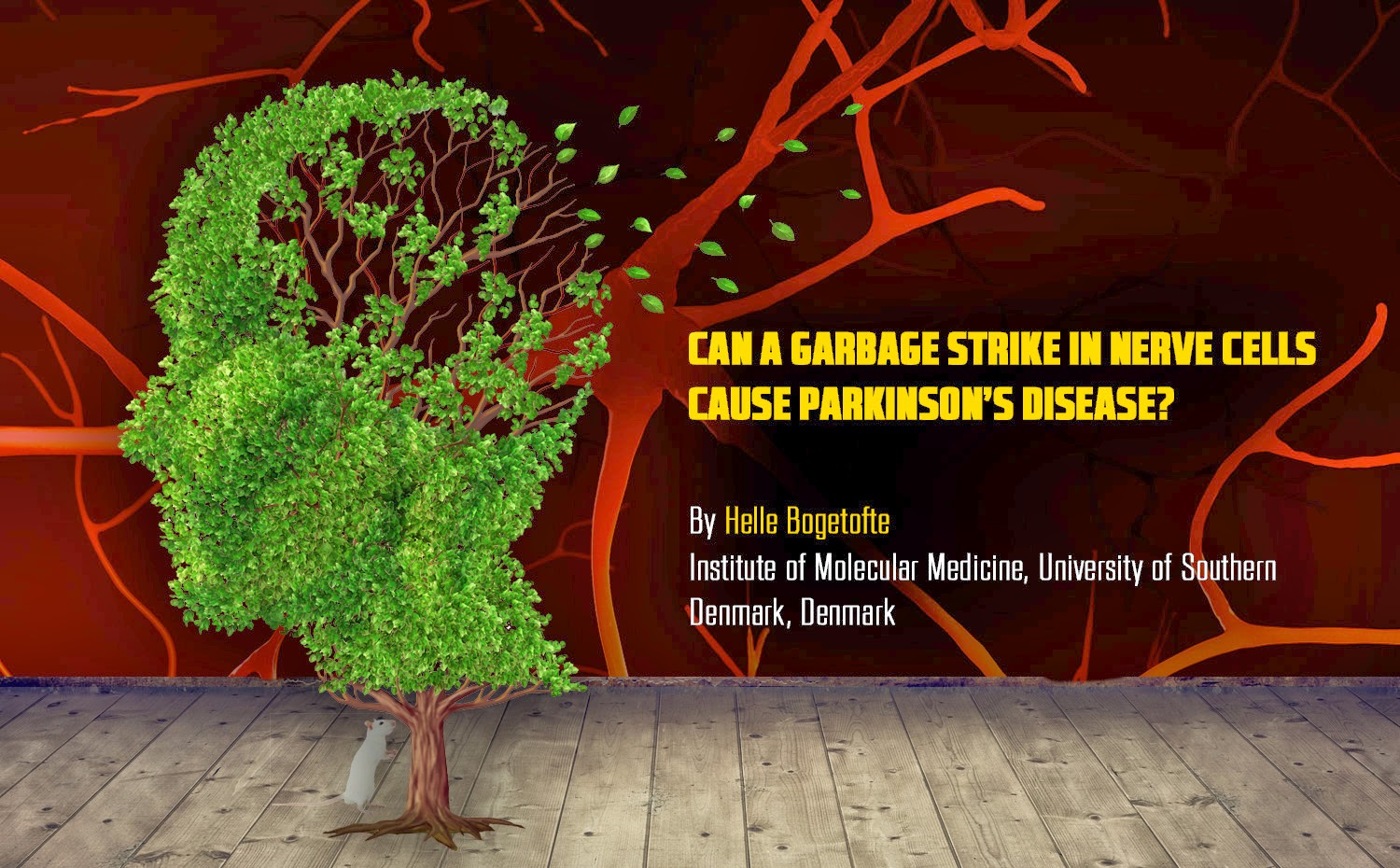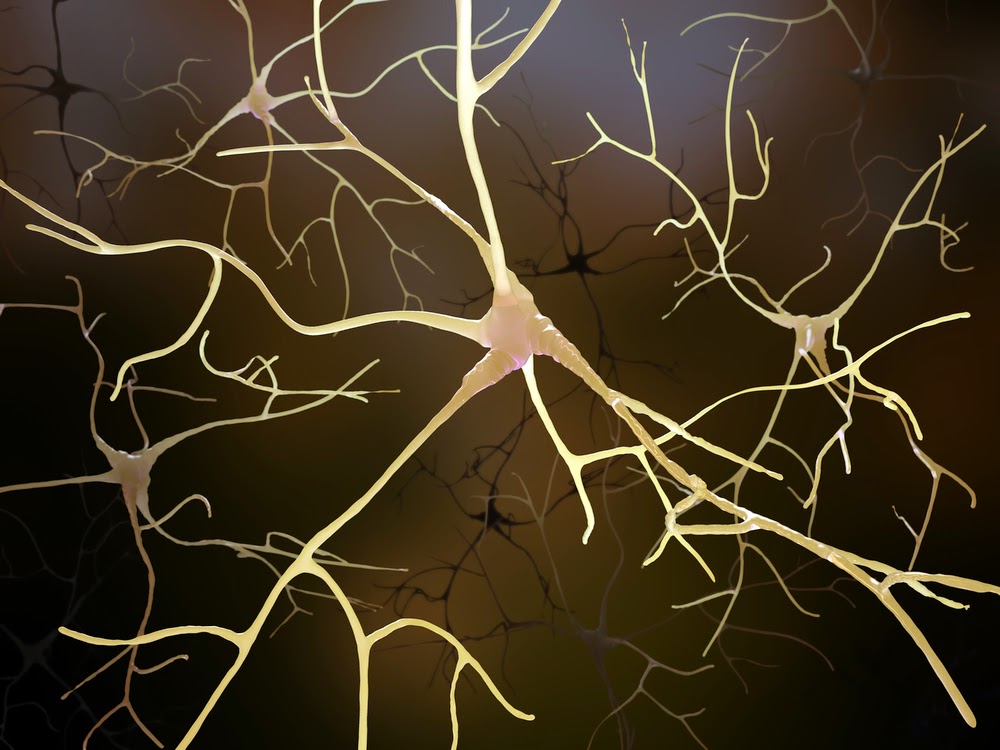 |
| Image design: Serial/Trash |
and draws attention to the nerve cells’ ability to tidy up.
cells in the brain slowly degenerate and die. The disease especially affects a
certain type of nerve cell, the dopaminergic nerve cells, which are located in
a small area of the brain called the substantia nigra. The dopaminergic nerve
cells here are very important for motor function and as the number of nerve
cells decrease, the patients are affected by debilitating tremors and mobility
problems. Actor and Parkinson’s patient Michael J. Fox describes it “like having a 4-year-old child climbing around on your lap all the time,
pulling on your arms and legs.”1
still unknown. One thing we know for certain is that the dopaminergic nerve
cells build-up clumps of protein and leftover material, called Lewy bodies. The
major component of Lewy bodies is a-synuclein, a protein therefore thought to be a primary causative factor
for Parkinson’s disease. The fact that mutations in the a-synuclein gene
increase the risk of developing Parkinson’s disease supports this theory.
proteasome; a big protein complex, which is part of the cells “garbage
disposal” system and can degrade non-functional proteins.
and can form so-called pale bodies. These are small precursors of Lewy bodies.
cell by gathering the non-functional proteins in areas where they cannot
disturb important processes in the nerve cell – akin to hiding your mess in the
closet to prevent it from cluttering up your room. It is, however, only a
temporary solution and eventually the nerve cells die.
numerous functions including production of energy from glucose. Extensive
research points to dysfunctional mitochondria as a major contributor to
Parkinson’s disease. For one thing, worn-out mitochondria are a large component
of pale bodies.
 |
| Image Source: Shutterstock Copyright: Mopic |
Modified mice
and mitochondria researchers from the University of Nottingham used genetically
modified mice. The DNA of the mice was changed so that certain genes were not
expressed. This allowed the researchers to evaluate the exact effect of the
proteins that the genes encoded. The research group had previously developed
mice, which could not produce the most commonly used form of proteasomes, the
26S proteasomes, in their dopaminergic nerve cells. The garbage disposal system
in these mice therefore did not work properly and they quickly developed
extensive nerve cell death and pale bodies comparable to the ones seen in
Parkinson’s patients.
process. They did this by modifying the mice further, to obtain mice that in
addition could not produce a-synuclein.
This made it possible for them to compare the mice that lacked both 26S
proteasomes and a-synuclein
with the mice that only lacked 26S proteasomes. Surprisingly they found no differences:
both type of mice showed equal amounts of nerve cell death and pale bodies.
Since a-synuclein is
thought to be essential to this process, the predicted outcome would be that
the mice lacking a-synuclein
are less affected and have lower amounts of pale bodies. This however is not
the case.
the content of the pale bodies and found it to be the same with or without a-synuclein. As
expected they found the main component of the pale bodies to be the third
suspected contributor to Parkinson’s disease: mitochondria. This points to a
link between inefficient proteasomes and lacking disposal of worn-out
mitochondria.
essential for the development of pale bodies and that lack of functional
proteasomes alone can lead to neurodegeneration in mice. More research is
needed to tell if the pale bodies seen in the mice will develop into Lewy
bodies and especially, if the results can be transferred to human nerve cells.
If they can, it means that researchers studying Parkinson’s disease might have
to re-evaluate their whole idea of how the disease originates. Instead of
seeing a-synuclein as a
primary causative factor, it might just be one of the major contributors along
with others like proteasome and mitochondria dysfunction. This is of great
importance for understanding the cause of Parkinson’s disease and development
of new effective treatments in the future.
This summary by Helle Bogetofte was shortlisted for Access to Understanding 2014 and was commended by the competition judges. It describes research published in the following article, selected for inclusion in the competition by Parkinson’s UK:
Access to Understanding entrants are asked to write a plain English summary of a research article. For Access to Understanding 2014 there were 10 articles to choose from, selected by the Europe PMC funders. The articles are all available from Europe PMC, are free to read and download, and were supported by one or more of the Europe PMC funders.
Look out here and on Twitter @EuropePMC_news for further competition news and other Europe PMC announcements.



